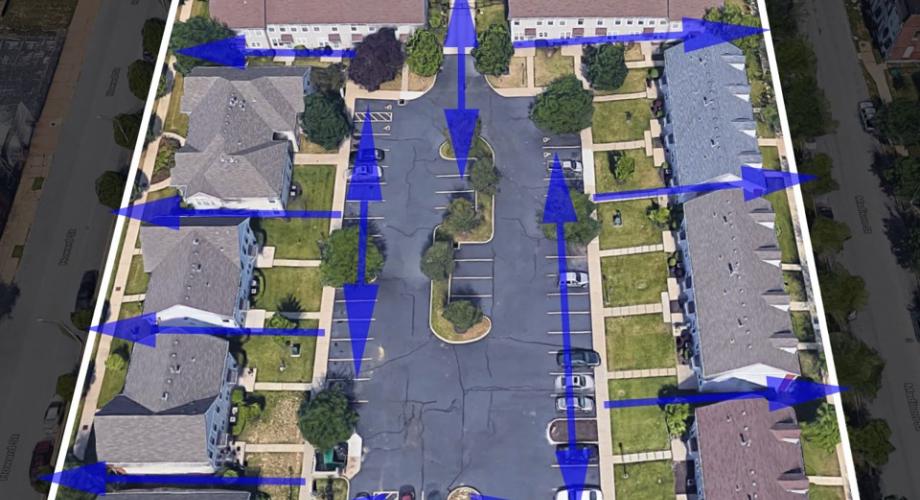Crime Prevention Through Environmental Design, or CPTED, is a term based on the understanding of how physical surroundings and established norms impact behaviors, such as crime and vandalism or their deterrents. By utilizing these four principles, the shape of a physical environment can be transformed to promote positive behaviors and discourage negative ones.
Natural Surveillance
Creating ways that make parts of a property more visible deter crime because people committing such behavior do not want an audience. Simply trimming overgrown landscaping or utilizing open stair risers creates more visibility and gives criminals less opportunities to hide.
Creating ways to passively increase visibility is a great step, but you can also take a more active role with activity generators. Activity generators are things in your community people utilize, increasing foot traffic, which in turn increases visibility. Amenities such as playgrounds and community mailboxes are excellent examples of ways to increase activity and natural surveillance.
Natural access
This involves limiting criminal opportunities by not only restricting access to the property but also by controlling the direction of traffic. Many properties will utilize geography to their advantage. They may have high iron fences along the front, but the sides may purposefully be built into the surrounding woodlands or a lake to limit access. Criminals who are unable to get to their targets easily are less likely to commit crimes.
Natural Territorial Reinforcement
The process of clearly defining the boundary between public and private space. Having ways to reinforce this feeling of territory can give residents a better sense of community and help to quickly identify someone who is an outsider. Strategically placed trees, sidewalks, roads and signage are all great ways to help clearly delineate public and private space.
Maintenance
The oft-referenced “broken windows theory” says that buildings with a few broken windows that are not repaired encourage vandals to break more windows. If nothing is done about this new damage, their behavior escalates. The moral: If you let little things accumulate, before you know it, you have big problems.
Implementing these principles might be easier than you think. The simplest thing to start or improve on are daily rounds. Have your team walk the property and its boundaries daily. While on this walk they can ensure gates, locks and other access controls are functioning, perform a landscape audit, inventory high-value assets such as air conditioners and pick up litter on the grounds.
Taking steps to achieve these principles of CPTED can possibly reduce the potential for crime and improve the quality of life for residents, and lead to increased occupancy rates.
